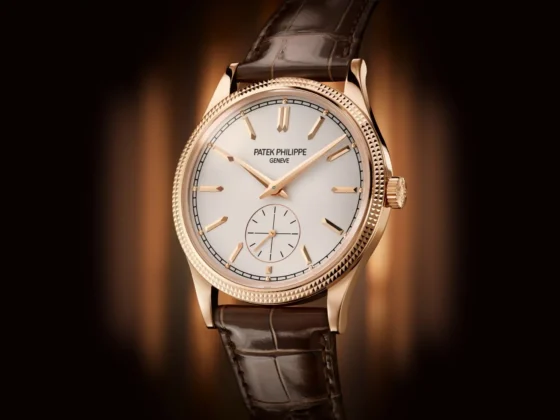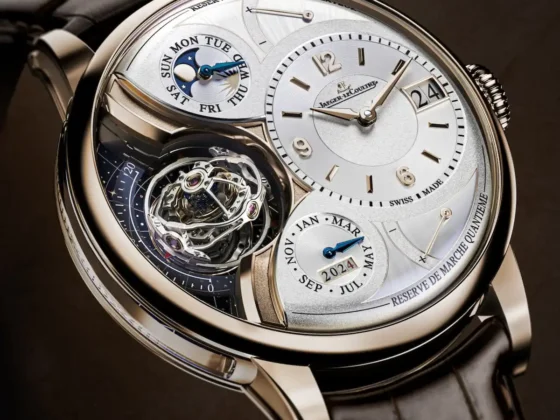Few watches have left as indelible a mark on the horological world as the Audemars Piguet Royal Oak. Since its debut in 1972, the Royal Oak has not only defined the luxury sports watch category but also revolutionized haute horlogerie by defying conventions of luxury design. Audemars Piguet’s daring choice to craft a high-end timepiece from stainless steel, rather than precious metals, marked a bold departure from traditional luxury watchmaking, paving the way for a new era of watch design.
The Birth of a Legend: The 1970s Context
The Royal Oak was born at a time of crisis for Swiss watchmakers. In the early 1970s, the quartz movement revolution was threatening to undermine traditional mechanical watchmaking. Audemars Piguet, a brand known for its exceptional craftsmanship and intricate complications, recognized the need for innovation to stay relevant in the changing landscape.
In response, the brand enlisted the genius of legendary watch designer Gérald Genta. The brief? Create a watch that would captivate a new generation of consumers while maintaining the brand’s commitment to fine watchmaking. The result was the Royal Oak: a timepiece unlike anything the world had seen..

Breaking the Mold: The Royal Oak’s Radical Design
The most revolutionary aspect of the Royal Oak was its use of stainless steel as the primary material for a luxury watch, priced on par with gold counterparts. This bold move was unheard of at the time, challenging the perception of what constituted a “luxury” material. The Royal Oak’s octagonal bezel, inspired by a ship’s porthole, was secured with visible screws, adding to its rugged yet refined aesthetic.
The “Tapisserie” dial pattern became another signature of the Royal Oak, featuring a finely guilloché motif that contrasted with the watch’s bold, industrial design. The integrated bracelet—sleek and perfectly proportioned—offered a seamless transition from case to wrist, further emphasizing the avant-garde nature of the watch.
Impact on the Industry: Setting a New Standard for Luxury Sports Watches
When the Royal Oak was launched at Baselworld in 1972, it was met with mixed reactions. The idea of a luxury watch in stainless steel with an avant-garde design, priced significantly higher than gold watches, was radical. However, the watch slowly gained traction, particularly among tastemakers and celebrities, and eventually solidified its place as an icon.
The Royal Oak redefined the entire industry, establishing the luxury sports watch category and inspiring other brands to follow suit. The watch’s bold yet elegant design set a new standard for what a luxury watch could be—both functional and stylish, equally suited to formal occasions or casual wear.

Key Milestones: Evolution of the Royal Oak
Over the years, the Royal Oak has undergone several iterations, each adding to its legacy while staying true to its original design DNA. Some key milestones include:
- 1977: The introduction of the Royal Oak Jumbo ref. 5402, a slightly refined version of the original, which became a collector’s favorite for its ultra-thin movement and timeless proportions.
- 1984: The Royal Oak Perpetual Calendar launched, merging the Royal Oak’s groundbreaking design with one of horology’s most esteemed complications.
- 1993: The launch of the Royal Oak Offshore, a bolder, sportier version of the classic, designed to appeal to a new generation of luxury sports watch enthusiasts. Larger and more robust, the Offshore further cemented the Royal Oak’s status as a trendsetter.
- 2012: The 40th anniversary of the Royal Oak, celebrated with limited editions and tributes to the original design, further reinforcing its enduring appeal.
- 2022: For its 50th anniversary, Audemars Piguet released new iterations of the Royal Oak, featuring updated materials, movements, and even more attention to detail, ensuring the watch’s relevance in the modern era.
The Royal Oak Today: A Symbol of Timeless Innovation
Today, the Royal Oak is considered one of the most sought-after and collectible watches in the world. From its innovative design to its technical prowess, the Royal Oak represents more than just a timepiece; it’s a symbol of timeless luxury, innovation, and a willingness to challenge conventions.

Collectors, connoisseurs, and celebrities alike are drawn to its bold yet classic appeal, and with a wide array of materials, complications, and limited editions, the Royal Oak continues to push the boundaries of watchmaking while staying true to its roots.
Conclusion: A Legacy of Innovation
The Audemars Piguet Royal Oak forever altered the landscape of luxury watchmaking. By redefining what a luxury watch could be, Audemars Piguet not only saved itself during a tumultuous period but also set a new standard for the entire industry. The Royal Oak’s fusion of tradition and innovation continues to inspire generations of watchmakers and enthusiasts, making it not just a watch but an enduring legacy.











